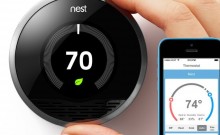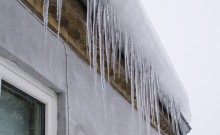Winter is far from over, but it’s not too soon for homeowners to begin thinking about all the damage that homes may have sustained from prolonged cold, snow and ice. The National Pest Management Association (NPMA) warns that ice dams are one of the most troublesome winter-related home problems as they can create the perfect environment for termites.
An ice dam is a ridge of ice that forms at the edge of a roof and prevents melting snow from draining properly. The melting snow backs up behind this dam and can leak into a home, causing water damage to walls, ceilings, insulation, drywall and can provide enough moisture to attract termites as they begin to emerge at the first signs of spring.
Termites are known as silent destroyers because their constant gnawing can go unnoticed until significant structural damage to the home occurs. Even more problematic is that termite property damage, which according to NPMA accounts for at least $5 billion each year, is not covered by homeowners insurance. Depending on the extent of the destruction, homeowners can be saddled with large repair bills.
Before the ground warms, and termite swarms emerge in search of new structures to feast on, homeowners should take necessary steps to ensure winter hasn’t done a number on their homes and left them vulnerable to pest problems in the spring.
To prevent ice dams and possible subsequent termite infestations, NPMA offers the following 10 tips:
1. Promptly clear snow off roofs before it freezes and becomes harder to remove.
2. Install snow and ice shields on the roof.
3. Clean out gutters, and install gutter guards.
4. Cover an attic or house fan during winter.
5. Repair fascia and rotted roof shingles.
6. Add insulation to the attic rafters and ceiling.
7. Seal and insulate HVAC ducts.
8. Install chimney flashing to prevent leaks.
9. Seal gaps around electrical cables and vent pipes.
10. Install eave and soffit vents to circulate cold air.
Ice Dams Put Homes at Risk
Please follow and like us:






Leave a Comment